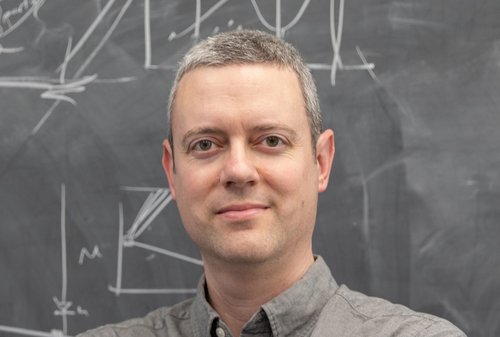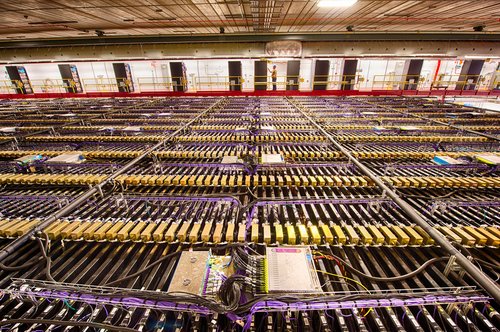Caltech researchers co-lead new study refining what we know about the ghostly particles
Very early on in our universe, when it was a seething hot cauldron of energy, particles made of matter and antimatter bubbled into existence in equal proportions. For example, negatively charged electrons were created in the same numbers as their antimatter siblings, positively charged positrons. When the two particles combined, they canceled each other out.
Billions of years later, our world is dominated by matter. Somehow matter "won out" over antimatter, but scientists still do not know how. Now, two of the largest experiments attempting to find answers-projects that focus on subatomic particles called neutrinos-have joined forces.
In a new Nature study, an international collaboration representing the experiments- NOvA in the United States and T2K in Japan-present some of the most precise neutrino measurements in the field. The two teams decided to combine their data to learn more than any one experiment alone could.
 Zoom In to Image
Zoom In to Image Ryan Patterson, professor of physics
"By bringing these two efforts together, we can tease out new insights into how neutrinos work," says Ryan Patterson (BS '00), professor of physics at Caltech, who co-led the NOvA side of the study.
A goal of both projects is to determine whether regular neutrinos and antineutrinos (their antimatter counterparts) behave in ways that are asymmetrical relative to each other. This asymmetry could explain why matter was favored over antimatter in the early universe. The new results do not yet indicate whether this is the case, but the exquisite measurements bring scientists closer to understanding the mystery.
"Neutrino physics is a strange field. It is very challenging to isolate effects," says Kendall Mahn, a professor at Michigan State University and the co-spokesperson for T2K.
Both experiments are known as "long baseline," which means they send neutrinos traveling through Earth's crust for hundreds of kilometers. NOvA, the NuMI Off-axis νe Appearance experiment, sends a beam of neutrinos 810 kilometers from its source at the U.S. Department of Energy's Fermi National Accelerator Laboratory (Fermilab) near Chicago to a 14,000-ton neutrino detector in Ash River, Minnesota.
 Zoom In to Image
Zoom In to Image Another view of the NOvA far detector in Minnesota. The detector comprises 344,000 individual cells each 50 feet long and filled with a mixture of mineral oil and dissolved light-emitting chemicals. When a neutrino interacts in the detector, it produces a spray of high-energy particles that stream through the cells and light them up. Researchers detect and analyze that light to study how the neutrinos have changed over their journey from Fermilab. Credit: Reidar Hahn/Fermilab
The T2K experiment's neutrino beam travels 295 kilometers west from the city of Tokai in central Japan toKamioka-hence the name T2K. Tokai is home to the Japan Proton Accelerator Research Complex (J-PARC) and Kamioka hosts the Super-Kamiokande neutrino detector, an enormous tank of ultrapure water located a kilometer underground. In 1998, Super-Kamiokande discovered that neutrinos have mass, a landmark finding that later earned two of its discoverers the 2015 Nobel Prize in Physics .
But while neutrinos have mass, they are extremely lightweight and often referred to as ghostly for their ability to travel unhindered through substances like the ground beneath us. They come in three flavors: the electron neutrino, muon neutrino, and tau neutrino. As neutrinos travel through space or in the ground, they can switch flavors. If you think of the flavors as being like strawberry, chocolate, and vanilla, this would be like finding your strawberry ice cream cone turned to chocolate on your way home.
The phenomenon, called neutrino oscillation , has to do with the fact that each flavor is a quantum superposition of three different mass "states," each with its own distinct mass. As the neutrinos travel, the relative proportions of each of those three mass states will shift, which changes their flavor. The big question for neutrino scientists is whether regular neutrinos and antineutrinos change flavors in different, asymmetric ways. If they do, this would help solve the missing antimatter problem.
To study neutrino oscillation, the researchers produce neutrinos or antineutrinos of a specific flavor at the source of the experiments and then measure what flavors arrive at the detectors. In the case of NOvA, for example, this means sending the particles from Fermilab to the detector in Minnesota.
"As our neutrinos travel through Earth's crust, they pick up another sort of asymmetry en route in addition to the possible intrinsic asymmetry in the particles themselves. It is this intrinsic asymmetry that may help explain the lack of antimatter in our universe," Patterson says. "Both effects teach us new things about neutrinos but separating them is key."
One tricky aspect of studying neutrino oscillation is that scientists do not know the actual masses of the three mass states making up each flavor of neutrino. It is like knowing strawberry, chocolate, and vanilla ice cream are made of three unique ingredients in different proportions but not knowing how heavy the ingredients are. Scientists are actively trying to figure out the relative ordering of the three mass states. In the case of our three ice cream ingredients, this is like asking how their masses compare to each other. There are two possible ordering schemes. Under so-called normal ordering, two of the mass states are relatively light and one is heavy, while an inverted ordering has two heavier mass states and one light.
"Resolving the ordering question is another central goal in the field," Patterson explains. "It connects to a wide array of phenomena from the subatomic to the cosmological scale."
The combined results of NOvA and T2K so far do not favor one mass ordering scenario over another. However, if future results show the neutrino mass ordering is inverted and not normal, NOvA's and T2K's results published today provide evidence that neutrinos do exhibit the suspected asymmetry, potentially explaining why the universe is dominated by matter instead of antimatter.
In the future, the scientists will analyze more data from NOvA and T2K, as well as data acquired by planned neutrino experiments that, when operational in the early 2030s, will provide even more precise measurements. Caltech scientists, led by Patterson, are helping to develop the Fermilab-based Deep Underground Neutrino Experiment (DUNE) under construction in Illinois and South Dakota. With its longer baseline of 1,300 kilometers, DUNE will be more sensitive to the neutrino mass ordering than NOvA and T2K, and it could give physicists a conclusive answer shortly after it turns on. Japan is also building a new neutrino experiment, Hyper-Kamiokande , a sequel to Super-Kamiokande, and China is building an experiment called the Jiangmen Underground Neutrino Observatory .
The Nature study is titled "Joint neutrino oscillation analysis from the T2K and NOvA experiments." Caltech's work in the study was funded by the U.S. Department of Energy. Other Caltech-affiliated scientists contributing to the study include senior research scientist Leon Mualem; Varun Raj (PhD '25); former postdoc Kathryn Sutton; and former postdoc Zoya Vallari, now an assistant professor of physics at Ohio State University.
Top image: A picture of the NOvA "far detector" located in Minnesota. Neutrinos sent from Fermilab's NuMI (Neutrinos at the Main Injector) beam travel 810 kilometers underground to reach this detector. Credit: Reidar Hahn/Fermilab






